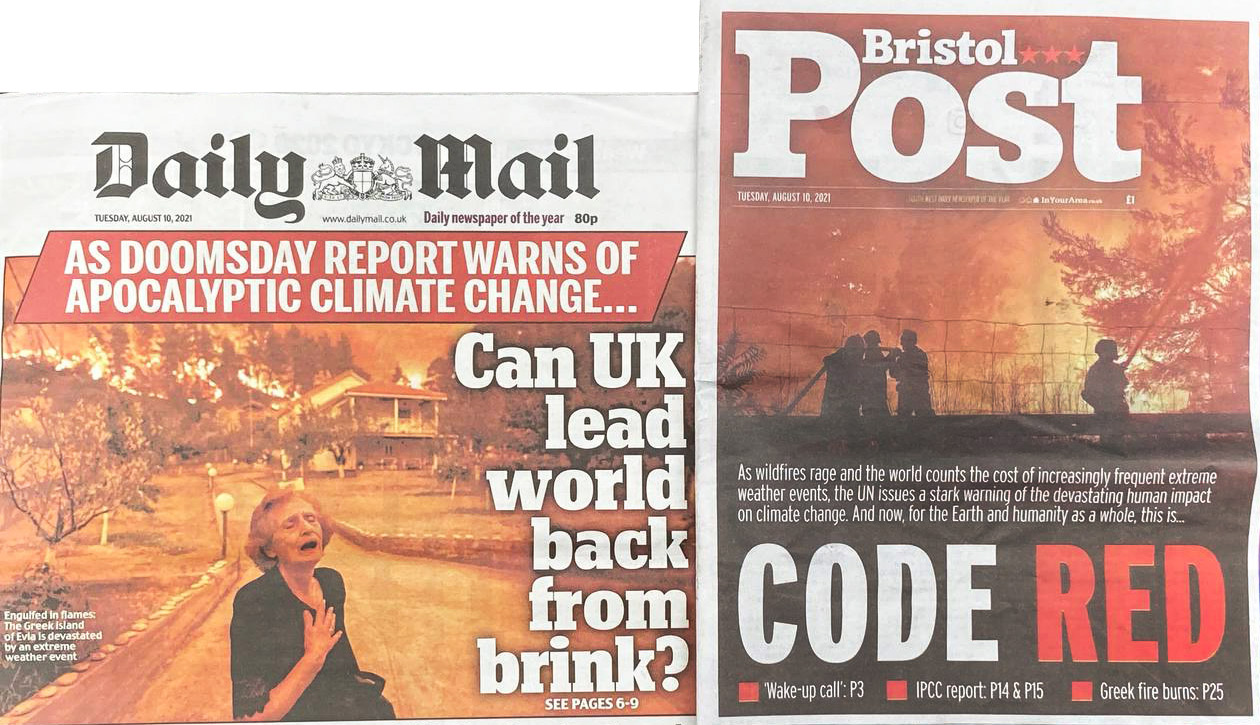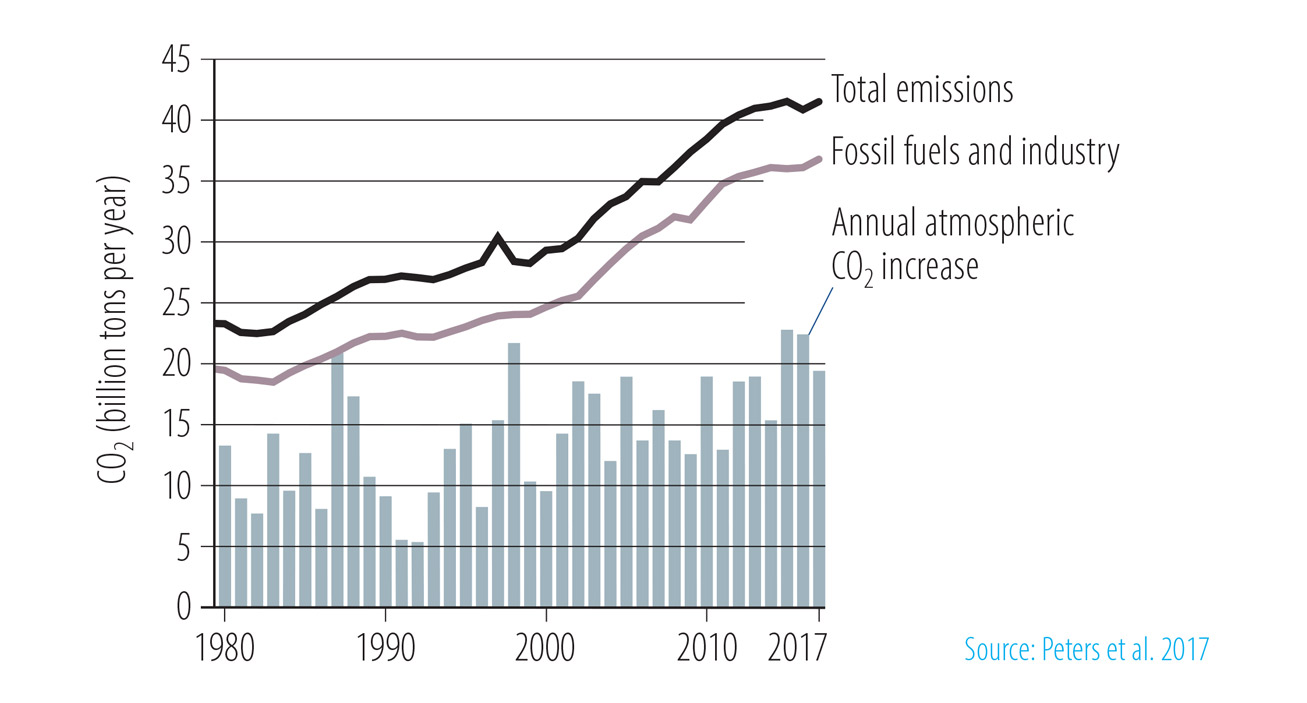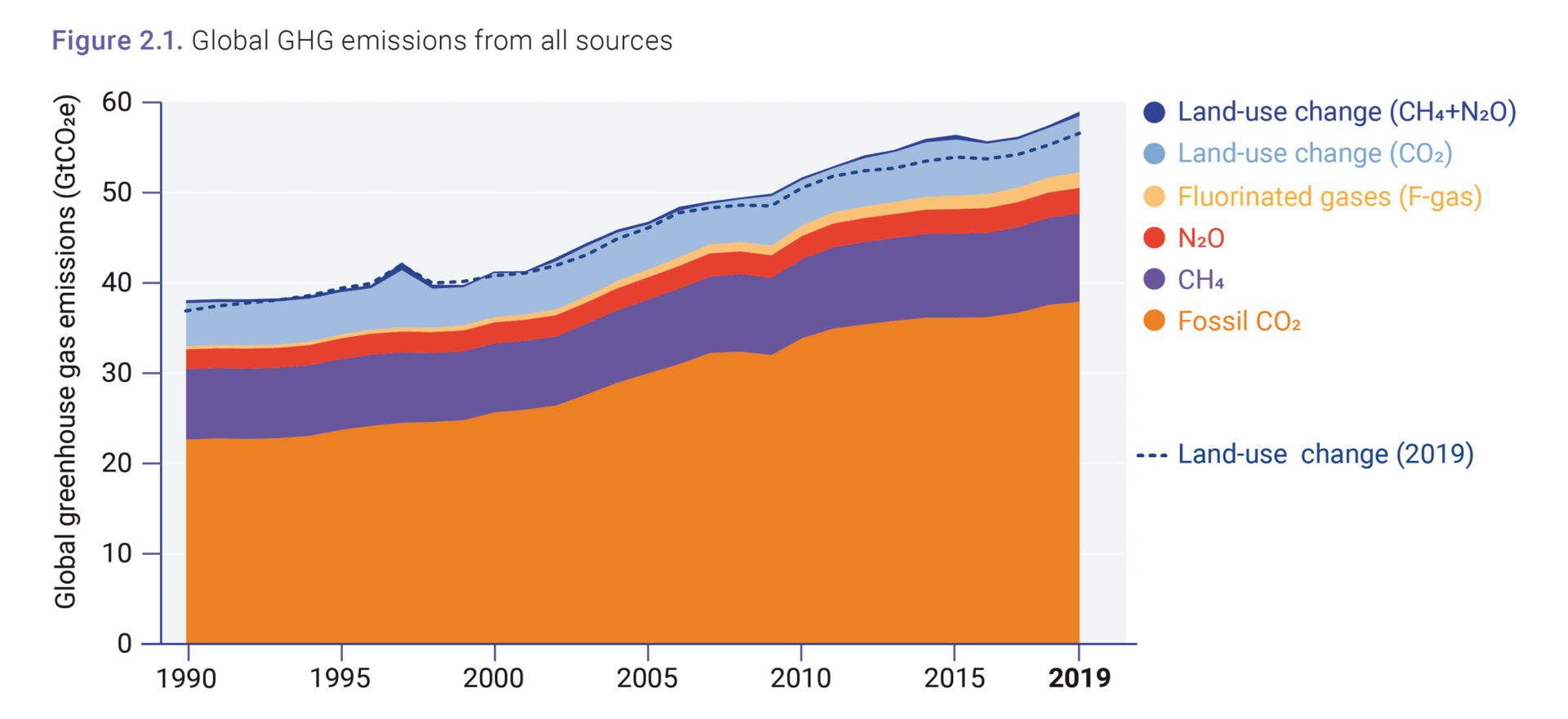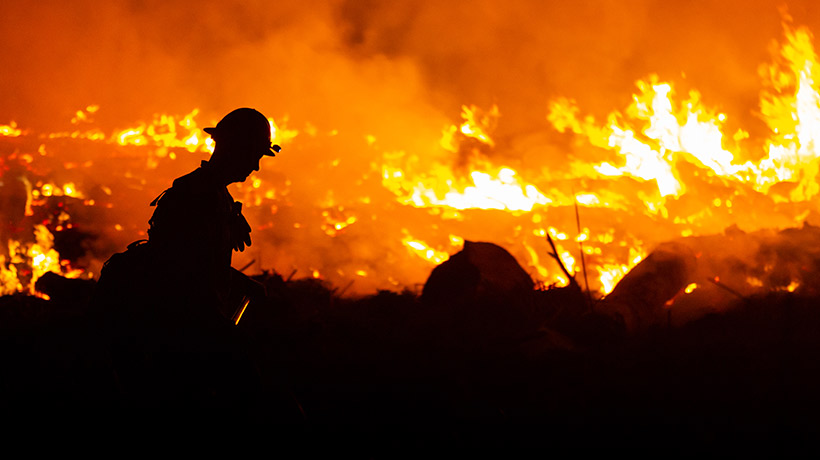On 9 August 2021, the IPCC Sixth Assessment Report was published. The core message “Code Red” ignited in many countries, together with the information that we really only have this decade to turn the tide of climate destruction.
But in some countries, once again, the message did not really get through; “Code Red” as a headline has remained virtually unknown in too many places. Partly because our language is overdue for an overhaul. I agree with the Guardian language changes on climate matters, for example: “climate emergency” or “climate crisis” to be used instead of the gentle “climate change”, and “global heating” instead of “global warming”. Or consider the term “plastic pollution” which prevents the realisation of the total contamination of the planet’s ecosphere by micro and nano plastic particles. But even all this whitewashing is reaching its limits:
The disruption of the climate is increasing
It is now official that the level of global climate disruption we have reached so far – i.e. polar and glacial melt, heating of the oceans and atmosphere, large-scale degradation of the Amazon rainforest, as well as frequent and severe extreme weather on all continents – will not be reversed in our lifetime! We can only prevent worse – but that is still a lot! And at the same time, we are told by inactive politicians, we have to come to terms with the increasingly uncomfortable situation.
That is why the term “resilience” came into fashion (or was brought into fashion) during the last few years. It denotes stamina, toughness, elastic recovery. This applies to cities and municipalities (let them set up local programmes to somehow stay afloat!) and also to individuals (losing one’s home every few years to a flood or fire disaster is just part of life! The insurance companies will soon stop paying for it anyway. Everyone should always have a torch, life jacket, gas mask and a good book in their survival backpack under the bed). Yes, resilience instead of lamenting is increasingly demanded of the people.
That’s how people and times change. Only politics and big industry change… nothing.

Fig. 1: British newspapers stayed in “code red” all week after the IPCC report. Even the right-wing conservative Murdoch publications no longer deny the burning situation.
But was the apocalyptic news from the Intergovernmental Panel on Climate Change really a surprise? Some of us had actually already wondered why UN delegates had been adopting increasingly strident tones on the subject in recent months, such as UN Secretary-General António Guterres in April 2021: “We are on the edge of the abyss.” (incidentally, this also barely made it into the media of many countries). If you still think the term “apocalyptic” is exaggerated in this context, you should take a look at the video in this Guardian article (scroll down two thirds), which gives a concise overview of July 2021 only. Or the retweets of Greta Thunberg.
But overall, the true extent of humanity’s climate-damaging emissions remains well hidden from the public.
Let me briefly explain why I am making this provocative statement. When people talk about emissions, they almost always only talk about the burning of fossil fuels and the resulting carbon dioxide (CO2). It was pioneering work when the Norwegian climate scientist Glen Peters and his team published a study in 2017 that added CO2 from “Land Use Change” to CO2 from combustion. By the way, “Land Use Change” is another euphemism, but this time not a single nation’s folly but a standard UN term: it stands for the destruction of natural areas, mostly forests, and their conversion into agricultural land. This mainly concerns the destruction of tropical forests in Indonesia for palm oil plantations and of rainforests in the Amazon basin for cattle pastures and soy cultivation (cattle feed). These “changes” are among the biggest ecocides running.
To Peters’ credit, he not only calculated 36 Gt (gigatons = 1 billion metric tons) of CO2 from combustion for 2016, but also recognised a further 5 Gt for “Land Use Change”. No one else did that, not even the Intergovernmental Panel on Climate Change! Instead of 36 Gt, humanity in 2017 should have been concerned about the global impact of 41.5 Gt.

Fig. 2: Peters’ now outdated chart (2016 data) of global CO2 emissions. Approx. 36 Gt CO2 from fossil fuel combustion plus approx. 5 Gt CO2 from “Land Use Change”.
Please memorize this number: 41. Humanity emitted over 41.5 billion tonnes of CO2 in 2016.
Nevertheless, in the years that followed, public discussions far and wide were limited to carbon levels from combustion alone. In the UN, there is concern that fossil fuel CO2 emissions worldwide are still not falling. They had risen to 38 Gt in 2019 (currently the last fully evaluated year). Still no sign of the Paris Agreement and any reduction.
Within this CO2 framework, the IPCC Special Report of 2018 already said that humanity had only 420 Gt left of the Global Carbon Budget if the 1.5 degree target was to be met. In other words: The Intergovernmental Panel on Climate Change openly states that the carbon budget will be completely used up before 2030. 420 divided by 38 equals 11, i.e. eleven years:from 2018 to 2028. Politicians who only talk about halving CO2 by 2030 and about net zero carbon by 2050 are dancing in cloud cuckoo land.
Yet the IPCC did not even take into account the 5.5 Gt of “Land Use Change”. If we include them, we even have only seven years (from 2018) left to stay below 1.5°C global heating. But it gets worse:
Deflection: CO2 vs. greenhouse gases
All these calculations and political considerations (we still cannot speak of “measures”!) only refer to carbon release. But there are other climate-active gases. Do you remember the term “greenhouse gases”, which seems to have gone completely out of fashion? Google nowadays finds eight and a half times more entries for “carbon dioxide” than for “greenhouse gases”; but that should be the other way round really.
Greenhouse gases (GHG) are all anthropogenic (“man-made”) substances that have a climate effect and contribute to global heating. Besides CO2, these are mainly methane, nitrous oxide and fluorocarbons. But information has become scarce. Governments hardly want to know anything about “greenhouse gases total”, and even the Intergovernmental Panel on Climate Change so far predominantly focusses on CO2 alone. Only one source gives the full picture: the UNEP Emissions GAP Report, which bluntly reports annually on this very “gap”, the gap between promises (Paris Agreement) and reality.
To cut a long story short: CO2 does not represent 100% of the chemical cause of the climate problem, but only two thirds!
Here is the original diagram from the GAP Report 2020 (page xv):

Fig. 3: All sources of global GHG emissions (1990 to 2019). UN GAP Report 2020.
The GAP Report reveals:
- The notorious CO2 from fossil combustion actually represents only two-thirds of climate-damaging emissions (“fossil CO2”, orange).
- In addition, there is methane (CH4, purple), nitrous oxide (N2O, red), fluorinated gases (orange-yellow) and emissions from “Land Use Change”.
Remember the number I pointed out above?
Yes: 41.
Now we are talking about 59.
In 2019, humanity globally produced 59.1 Gt CO2e (carbon dioxide equivalent) of greenhouse gases.
And since nobody talks about it, two essential questions remain open:
1. If the smoke from forest burning is included as “Land Use Change” (“rainforest for hamburgers”), is the smoke from fire disasters that were not planned for “Land Use Change” (e.g. California, Siberia, Australia) also included here?
2. The different GHGs also have a different intensity of effect on the climate. Methane, for example, was long considered 21 times more harmful to the climate than CO2 (calculated over a period of one hundred years). But during 2019 and 2020 it became widely accepted that we do not have a whole century left for our horrendous climate management, and over a much more realistic period of 20 years methane is 86 times more harmful to the climate than CO2.
The biggest drivers of climate disruption are not aeroplanes and private passenger transport, but industrial agriculture and the extraction economy (mining and processing of “resources”). Therefore, things have to change on a large scale! This is well illustrated e.g. by the corona lockdowns 2020: the lockdowns temporarily caused many small regional miracles (blue skies, cleaner air, local return of insects, birds and animals), but the annual emissions of the world have hardly decreased in the lockdown year of 2020: only 7% less CO2, which even corresponds to only 4.5% less GHG. Corona was not “sooo good for the climate”, after all. But above all it shows how small the share of “consumers” is, compared to industry.
All in all, with the current business-as-usual we won’t even get below 2°C (global heating by 2100). If all the Paris pledges were suddenly implemented, the world would get to 2.4°C. And if everything continues to drag on like this, it will be at least 2.9°C. This does not even include tipping points, because they are unknown.
Note for Google fans
The search engine is no longer the neutral and omniscient source of information that many still believe it to be. Currently, in a Google search for “greenhouse gases worldwide 2019”, over 90 per cent of the (first) search results inevitably lead to mere CO2 information, and if there is any mention of GHG, then it is usually just national statistics.
Even the direct question “How many greenhouse gases are produced worldwide?” leads to the same result. And even beneath headlines that mention GHG, the articles only refer to CO2. The European Parliament website does indeed currently (August 2021) talk about GHG, but exclusive of “Land Use Change”, and with (overall implausibly low) figures from 2015 to 2017.
Incompetence of the best search engine in the world, or intention? In any case, this huge information gap helps the oil industry. (More on this in my article “The new climate war”).
Taking action yourself
We need ingenious ideas to find politicians who are not deeply attached to the industry lobbies but really want to serve their people as well as the non-human living communities of this planet.
Since we cannot wait much longer, the local climate groups that have mushroomed since the last IPCC announcement are a very good approach. Under the umbrella of GermanZero, for example, there are already over 50 local groups. In Britain and other countries, local Extinction Rebellion groups are a good starting point to get civil action and citizens’ assemblies off the ground. It is incredibly important that citizens everywhere start to arrange themselves and take responsibility.
Fridays For Future is also slowly coming back from their lockdown-induced cyberspace retreat. On 24 September 2021, a big international climate strike is planned for many locations. Hopefully, all age groups will come together again, as they did in autumn 2019 before the corona measures swept the streets clean.
When whole democratic states sink into surveillance capitalism and technocracy, people everywhere simply have to get together and act locally and regionally, doing everything that is sensible, useful, caring and loving. Organic farming, local management, local production and shopping, community work, social engagement and togetherness, dancing, singing and exchanging together.
A healthy life on a healthy planet can become possible. But we all have to really do something about it now.
Fred Hageneder’s new book “Healthy Planet – Global meltdown or global healing” will appear in January 2022.












